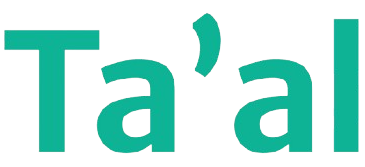Hiring a freelancer is a great way for businesses to access specialized skills without the long-term commitment of a full-time employee. Whether it’s design, content creation, or software development, freelancers offer flexibility, cost-effectiveness, and high-quality work.
Many businesses use freelance recruitment services to find the perfect fit quickly. To make the most of working with freelancers, it’s key to follow a clear process. In this guide, we’ll walk you through the steps to successfully hire a freelancer for your business needs.
1. Define Your Needs and Requirements
Before you start searching for a freelancer, it’s important to clearly define what you need. What kind of work do you need help with? Is it a one-time project, or will you need ongoing support? Understanding your requirements will help you find the right freelancer who specializes in that particular area. Be specific about the skills, experience, and deliverables you expect.
For example, if you need a website designer, identify the design style, platform preferences, and any other specific features you want in your website. The more detailed your project description, the easier it will be for freelancers to assess if they are the right fit for your business.
2. Set a Budget
Once you’ve defined your needs, setting a budget is essential. Freelancers often work on an hourly rate or project-based pricing. You’ll need to determine how much you’re willing to spend based on the scope and complexity of the project. Research the standard rates for freelancers in the industry or niche you’re hiring for, and consider factors like the freelancer’s experience level and the urgency of the project.
Remember, the lowest price doesn’t always guarantee the best results. It’s important to balance cost with quality to ensure you get value for your money.
3. Search for Freelancers
- Freelance Marketplaces: Some reliable platforms help you to post job listings and browse freelancer profiles.
- Professional Networking Sites: Search in professional places to find freelancers with a variety of skills.
- Industry-Specific Job Boards: These are ideal for finding freelancers with specialized skills, such as design or writing.
- Referrals: Ask colleagues, friends, or business owners for recommendations based on their previous experiences.
- Review Work Quality: Check freelancers’ portfolios, client reviews, and ratings to assess their reliability and work quality.
4. Review Portfolios and Resumes

Once you’ve found potential freelancers, explore extra to know their portfolios and past work. For creative roles, check design or writing samples; for technical jobs, ask for case studies. If finding the right freelancer is challenging, consider using freelance recruitment services to connect with skilled professionals suited for your project.
Additionally, review their resumes and profiles to check for relevant experience. Make sure they have worked on similar projects and have the skills you need for your business.
5. Conduct Interviews
Interviewing freelancers is an important step in the hiring process. While you may not meet them in person, you can arrange a video call or phone interview. This gives you a chance to assess their communication skills, professionalism, and approach to the project.
During the interview, ask about their experience, the process they follow to complete projects, and how they handle deadlines. It’s also helpful to ask for examples of how they’ve dealt with challenges in past projects. This will give you an idea of how they think on their feet and how they might handle any issues that arise during your project.
6. Set Clear Expectations
Once you’ve chosen a freelancer, make sure to set clear expectations. Outline the project’s scope, deadlines, milestones, and payment structure in writing. This can be done through a contract or a project brief that both you and the freelancer can refer to.
Make sure the freelancer understands your vision and requirements. Be open to asking questions and providing feedback during the project, but be clear about the desired outcomes. This will help prevent misunderstandings and ensure that the final deliverable meets your expectations.
7. Negotiate Terms and Finalize the Contract

Negotiating the terms of the contract is crucial to protecting project based hiring. Be clear on the following points:
- Payment terms: Will you pay per hour or per project? Will there be an upfront deposit or payment upon completion?
- Deadlines: Agree on realistic deadlines for each milestone or final deliverable.
- Intellectual property rights: Make sure to specify who owns the work once the freelancer completes the project.
- Confidentiality agreements: If necessary, have the freelancer sign a non-disclosure agreement (NDA) to protect sensitive information.
Ensure that both you and the freelancer are on the same page before starting the work.
8. Start the Project
Once everything is in place, it’s time to start the project. Keep communication open with the freelancer throughout the process. Regular check-ins and progress updates will help ensure the project stays on track.
If the freelancer works remotely, use project management tools to communicate and share progress. These tools help keep everyone organized and informed.
9. Provide Feedback and Make Adjustments
Throughout the project, make sure to provide constructive feedback. If the freelancer’s work is not meeting your expectations, explain what needs to be adjusted or improved. Be specific with your feedback and offer guidance on how to fix the issue.
It’s important to strike a balance between providing direction and allowing the freelancer the creative freedom or autonomy they need to complete the project. A better result will happen if people work together well.
10. Finalize the Project and Make Payment
Once the freelancer completes the work, review it carefully to ensure it meets the agreed-upon requirements. If everything looks good, approve the final deliverable and make the agreed-upon payment.
Leaving a positive review and providing feedback can help the freelancer build their reputation and potentially lead to future collaborations.
Conclusion
Freelance recruitment services can be an excellent way to access specialized skills and complete projects quickly. By following these steps—defining your needs, setting a budget, reviewing portfolios, interviewing candidates, and setting clear expectations—you can successfully hire a freelancer who will meet your business needs. Taking the time to choose the right freelancer and communicate effectively will lead to a smooth working relationship and high-quality results for your business.Looking to hire ideal freelancers for your business? Let Ta’al connect you with skilled professionals who can bring your projects to life with expertise and efficiency. Join today!




